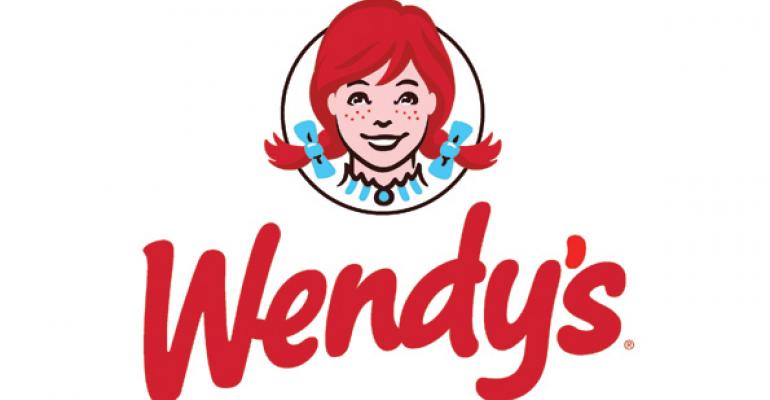Wendy’s struggled to attract value-seeking customers during the third quarter ended Sept. 28, the company said Thursday, leading to disappointing sales growth, even as rising beef and labor costs weighed on margins.
Parent The Wendy’s Co. will also likely sell more company-owned restaurants to franchisees and buy units from operators in certain markets in what executives described as an “optimization” of its restaurant ownership strategy.
In addition, Wendy’s said it plans to realign U.S. field operations and cut costs at its restaurant support center in Ohio to offset rising wage and commodity costs. The effort, along with the sale of restaurants in Canada, is expected to reduce general and administrative spending by $30 million. The company also wants to reinvest resources in restaurant development and customer-facing technology.
“We still think, in the environment we’re in, that this is a solid performance,” CEO Emil Brolick said during the company’s conference call Thursday morning.
Same-store sales at company-owned restaurants increased 2 percent during the third quarter, and have risen 5.2 percent on a two-year basis. Franchisees’ same-store sales increased just 0.5 percent during the third quarter. Executives attributed the gap between company and franchisee results to remodels. Wendy’s has remodeled a higher percentage of its restaurants than franchisees, and remodels generally yield a sales lift.
Still, Brolick said company-operated sales were slightly lower than expectations. Wendy’s blamed the problem on “lost momentum” in the value segment in the late third quarter and early fourth quarter.
Wendy’s relies on both ends of the price spectrum to drive sales, using a combination of premium and value items. The company drove sales with its Smoked Gouda Chicken and the Pretzel Bacon Cheeseburger, and in October with a BBQ Pulled Pork line.
But value is important, too, Brolick said. About a quarter of quick-service customers are value-oriented.
“You just can’t not deal with that group,” he said. “And if you look at the last 10 quarters in the industry, the price/value customer growth has been stronger than the non-value customer.”
Brolick attributed the lost value-seeking customers partly to reduced value messaging on Wendy’s part, and to intensifying competition for value customers by competitors. He said the company might have to make “some refinements” in how it combines its messages around premium and value offerings into next year.
Restaurants have also faced challenges in balancing the demands of value-seeking consumers with rising commodity costs. Wendy’s said its restaurant margins fell to 15.5 percent during the quarter, from 15.6 percent the previous year. The company blamed the decline on commodity costs, which it said increased 70 basis points, due to record beef prices during the quarter.
Commodity costs rose 2.3 percent during the quarter, which were more than double the company’s forecast early in the year.
More sales of company locations expected
(Continued from page 1)
Record-high beef costs are expected to continue into next year. Wage costs will rise, too, due to minimum wage hikes in several states, as well as costs related to the Affordable Care Act.
“We’re less concerned about a national initiative on minimum wages,” Brolick said. “It’s hard to deal with it on a local and state level. There are more initiatives that have been successful and passed around the country.”
Wendy’s expects its general and administrative costs next year to be $250 million, after the $30 million in cost savings.
Executives did not say what kind of customer-facing technology the company would invest in, but Brolick noted that the industry is “moving from service to self-service,” and that technology investments could “reduce labor content in restaurants, eventually.”
Wendy’s revenue fell 20 percent during the quarter, to $512.5 million, from $640.8 million a year ago. The lost revenue was due entirely to the sale of 418 restaurants to franchisees as part of its “system optimization” effort.
The company also said operating profit rose 75 percent during the quarter, to $46.9 million, versus $26.8 million a year ago. Much of that improvement was due to reduced general and administrative expenses.
Executives said more sales of company locations could be on the way. Wendy’s said it is selling 135 company restaurants in Canada to franchisees, and should finish the transactions by the end of the first quarter in 2015.
But the company could sell additional restaurants to franchisees “who have expressed or demonstrated a commitment” to remodeling company stores, executives said. The franchisor might even buy additional restaurants in certain geographic markets where it makes sense.
By concentrating ownership in certain geographic markets, executives say the company will be more effective and efficient at operating restaurants. Overall, they said, they expect a “net reduction in company restaurants over time,” meaning they will sell more restaurants than they will buy.
A key component is remodels. Wendy’s said it has remodeled about 600 restaurants, and is on track to remodel 740 to 765 restaurants by the end of the year, or 12 percent of its system. Wendy’s goal is to reimage 85 percent of company restaurants by the end of 2017, and it has incentives in place to encourage franchisees to do the same.
Contact Jonathan Maze at [email protected].
Follow him on Twitter: @jonathanmaze

